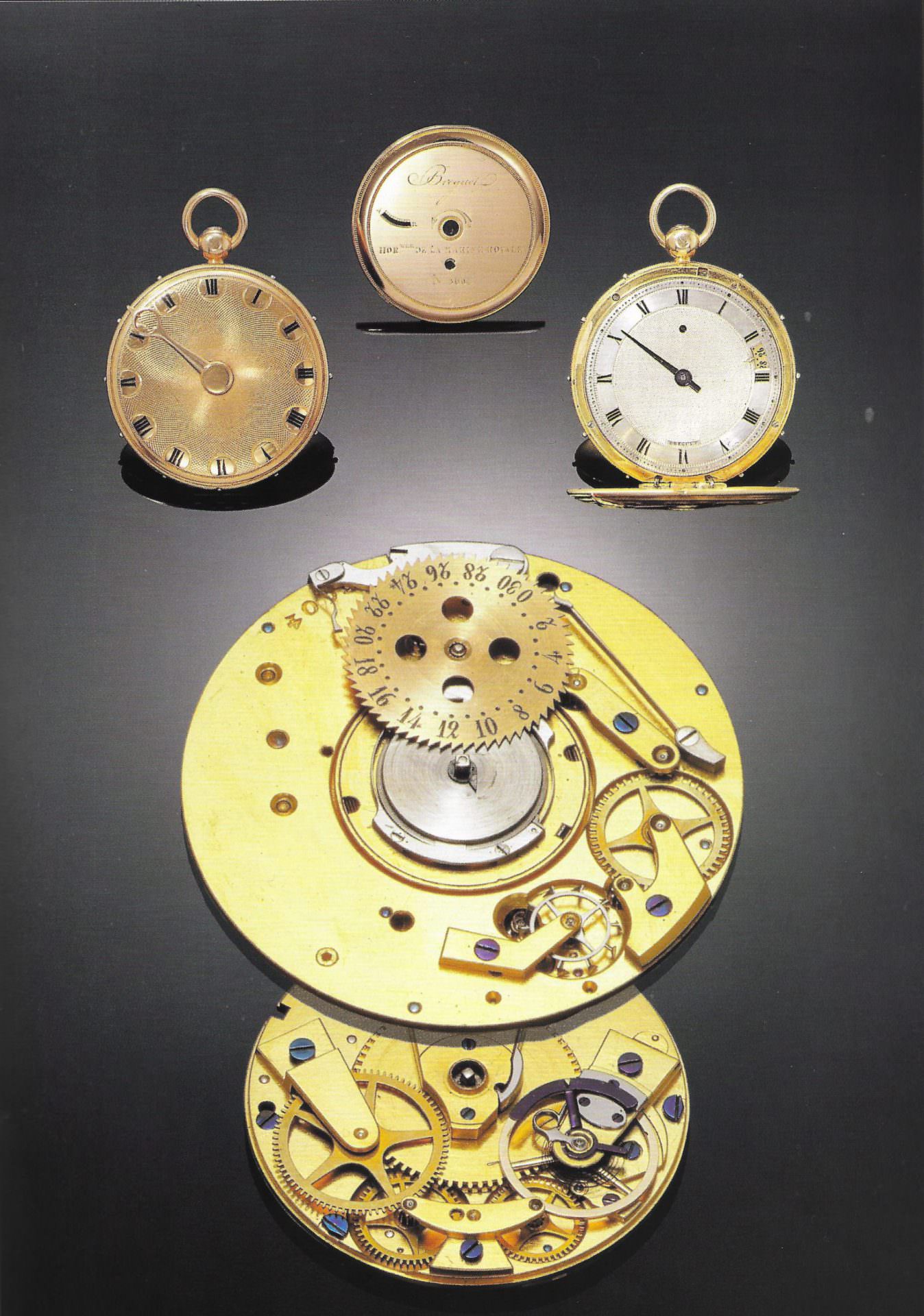Before the memes and before the call outs, #nodate— a war between those preferring date apertures and those despising— was all anyone wanted to talk about in the strange world of watch social media. Where did all this vigorous debate go? Are #nodate and #date collectors hiding in the weeds, caressing their sans-date and date watches, waiting for a time to strike? Truly, who’s to say? All I can tell you is where all this date aperture business started.
There are some indications around the internet that the date was the first complication found in horology following the indication of time by hands, but this is unproven. The moon phase and the repeater complications (more on the moon phase here) appeared before the date.
Referenced in our history of the moon phase, both Jean Vallier’s circa 1630 work of art and Thomas Mudge’s first perpetual calendar watch, finished in 1762, included a date complication. Additionally, Breguet featured date complications on its highly complicated masterpieces such as no. 217, completed in 1801.
Many publications say the first date complication in watches appeared around the early 1800s. These statements may be due to the fact that the first examples found with only date complications came from this period. Sticking with the Breguet theme, in 1821, the brand delivered no. 3604, an 18-carat yellow gold pocket watch featuring only a date aperture. This watch is among the first with only a date complication in addition to time.
 Photo from Christie's
Photo from Christie's  Photo from Antiquorum
Photo from Antiquorum At the start of the 20th century, the world got around to wearing watches on wrists rather than on a chain in a pocket. In 1915, a date complication made its way into a wristwatch case. That year, a watchmaker called A. Hammerly patented both a pointer date function and a dial aperture showing the day of the week in a wristwatch case. Interestingly, the date shown through an aperture was not patented by its producer.
Again in 1915, Movado, a vintage fan favorite, introduced what was likely the first wristwatch with a date window.

Consumers warmed up to having a date along with their time-only watches over the course of the 1920s and 1930s. Date windows spread around the Swiss watch world with numerous brands beginning to offer a watch with a date during this time. A special shout out to Mimo, a Girard-Perraugx adjacent brand, whose Mimo-Meter went a long way to popularize the complication after its introduction in 1930. The Mimo-Meter was the first wristwatch with a date window at 3 o’clock. Rolex would take it from here.
Hans Wilsdorf introduced his Jubilee or Datejust, depending on who you ask, on Rolex’s 40th anniversary in 1945. Rolex’s reference 4467 Datejust was the very first wristwatch with an automatic movement and an automatically changing date complication— previous movements were all manually advanced (note the small pusher at 2 o’clock on the Movado). The date wheel was colored red for even days and black for odd— now referred to as a ‘roulette’ date wheel— with the aperture placed at 3 o’clock to easily slip out from under the wearer’s cuff when worn on the left wrist.

Rolex continued to progress the date complication by introducing its cyclops magnifier and an instantaneous date turn over at midnight in 1953 and 1955, respectively. Earlier Datejust models slowly advanced the date over the course of 4 hours, 10 o’clock to 2 o’clock, making time setting during these hours mechanically dangerous. On the cyclops’ addition, the story goes that Hans Willsdorf’s wife was unable to easily read the date so the magnifier was added.
Along with the Datejust 2.0, Rolex introduced the GMT Master in 1955 with a date window at 3 o’clock. By the late 1960s, the Submariner and Sea-Dweller were offered with that same feature. With the date complication cemented as a mainstay in the Rolex catalog and other lines like Omega’s Seamaster beginning to become popular, the rest of the watch world followed, adding dates to just about everything.

Trends have changed in watch collecting— recently, vintage Rolex and integrated neo-vintage sport models like the Royal Oak and Nautilus have taken hold of the market. Most of these watches have a date, possibly causing the #nodate crowd to quiet down. I am sure that at some point we will all be back to arguing how much a date window ruins the symmetry of a dial— everything is cyclical.
Until then, remember how that date complication made its way onto your wrist, and that this was no accident. Remember how Movado made the first date wristwatch and Rolex built its golden age around it. Remember all of this because you no longer need to remember the date.

Check out 'Reference Tracks' our Spotify playlist. We’ll take you through what’s been spinning on the black circle at the C + T offices.

Never miss a watch. Get push notifications for new items and content as well as exclusive access to app only product launches.
Sign up for our newsletter to receive updates and exclusive offers